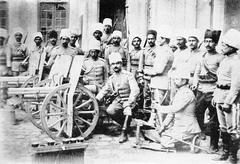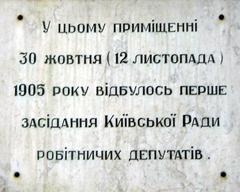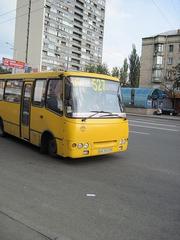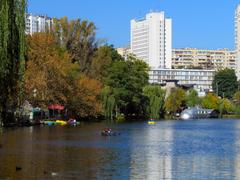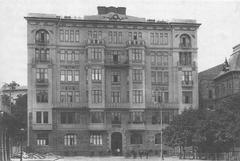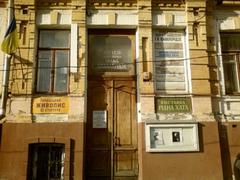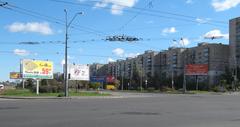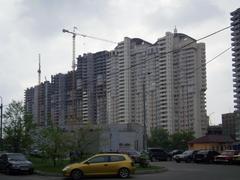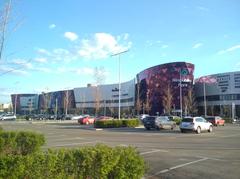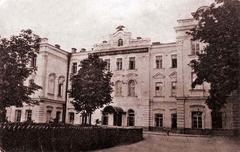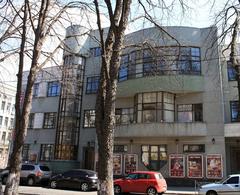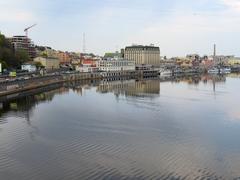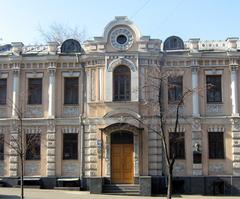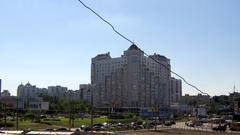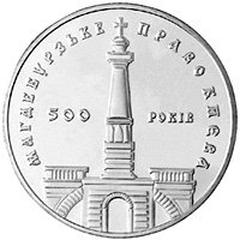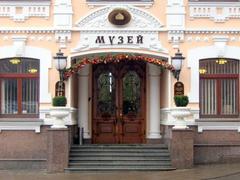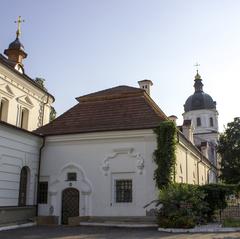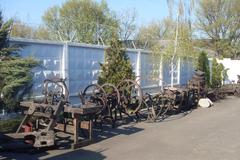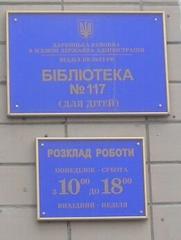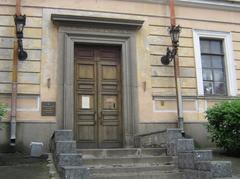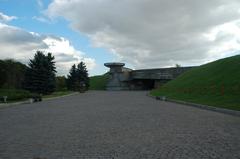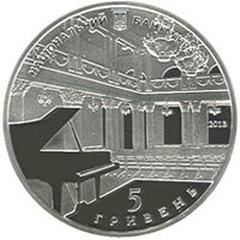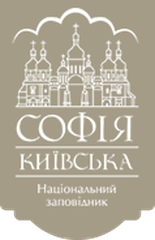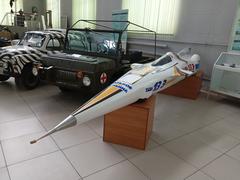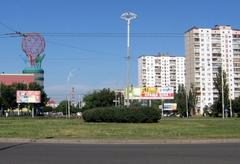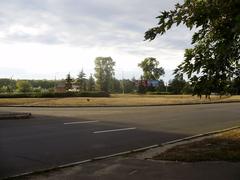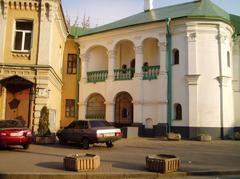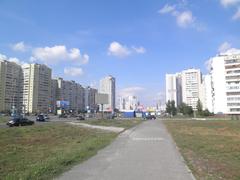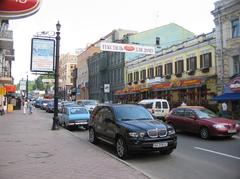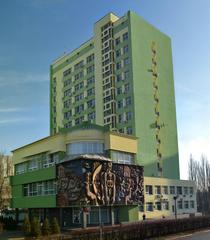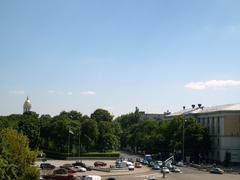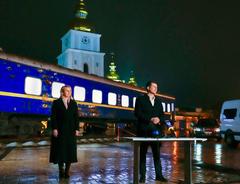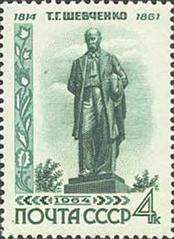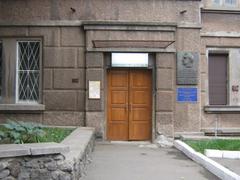
Bratyslavska Street Kyiv: Visiting Hours, Tickets, and Travel Guide
Date: 04/07/2025
Introduction
Bratyslavska Street, stretching through Kyiv’s Dniprovskyi and Desnianskyi districts, offers visitors a window into the city’s post-war urban development and modern multicultural life. Unlike Kyiv’s historic core, Bratyslavska Street is not marked by iconic monuments or formal attractions, but instead stands as a living example of Soviet-era residential planning and community-oriented spaces. Named after the Slovak capital Bratislava, the street’s name reflects Soviet traditions and Kyiv’s connections to the broader Eastern Bloc. Today, Bratyslavska Street embodies the everyday rhythms of Kyiv, featuring characteristic apartment blocks, green communal areas, vibrant local businesses, and a diverse population.
This comprehensive guide provides historical context, visitor information, cultural insights, safety advice, and practical travel tips for exploring Bratyslavska Street and its surroundings. Whether you’re interested in Soviet architecture, local traditions, or simply experiencing authentic Kyiv life, this guide will help you make the most of your visit (openalfa.com, locator.ua, xplrverse.com).
Contents
- Introduction
- History and Urban Development
- Soviet Architecture and Urban Planning
- Visitor Information: Access, Hours, and Tips
- Cultural and Social Context
- Modern Developments and Post-Independence Changes
- Notable Landmarks and Points of Interest
- Safety and Travel Advice
- Practical Travel Tips
- Frequently Asked Questions (FAQ)
- Summary and Recommendations
- References
History and Urban Development
Situated on Kyiv’s left bank, Bratyslavska Street was developed during the city’s Soviet-led expansion after World War II. Historically, the left bank was less urbanized compared to Kyiv’s ancient right bank. The need to accommodate a growing urban population led to the construction of new residential districts, and Bratyslavska Street became part of this expansion (openalfa.com).
The street’s naming after Bratislava is emblematic of Soviet traditions that honored other socialist capitals, symbolizing international ties within the Eastern Bloc (locator.ua).
Soviet Architecture and Urban Planning
Bratyslavska Street is lined with Khrushchyovka and Brezhnevka apartment blocks—typical mid-to-late 20th-century Soviet residential buildings constructed from prefabricated concrete panels. These structures prioritized functionality, affordability, and communal living. The street’s design emphasizes green spaces, playgrounds, and wide sidewalks, all connected by an efficient public transportation network. This environment fosters both community interaction and ease of movement throughout the area (openalfa.com).
Visitor Information: Access, Hours, and Tips
Bratyslavska Street is a public area accessible to visitors at any time, with no entry fees or ticket requirements. The most convenient way to reach the street is via the Darnytsia or Lisova metro stations, both of which offer easy links to central Kyiv and other neighborhoods. Public buses and trams also serve the area.
- Accessibility: The street’s wide sidewalks and relatively flat terrain make it moderately accessible for visitors with mobility challenges. Some areas may still require assistance.
- Best Times to Visit: Spring through autumn offers the most pleasant weather and outdoor events.
- Amenities: Cafés, bakeries, shops, and local markets provide a taste of daily life. Parks and playgrounds are open from early morning until sunset.
Cultural and Social Context
Bratyslavska Street is home to a multicultural population, with residents from across Ukraine and other former Soviet republics. The area’s communal atmosphere is reflected in its parks, schools, and local businesses. Public art, murals, and community projects add vibrancy to the street, while regular markets and small eateries offer authentic culinary experiences. The street’s social life is animated by families, students, and older residents, making it a microcosm of Kyiv’s broader diversity (openalfa.com).
Modern Developments and Post-Independence Changes
Since Ukraine’s independence in 1991, Bratyslavska Street has adapted to modern needs. Many apartments were privatized, and new businesses have emerged, reflecting economic and cultural shifts. Infrastructure improvements continue, with updated retail outlets, renovated playgrounds, and occasional new construction, all while retaining the district’s Soviet architectural character (locator.ua).
Notable Landmarks and Points of Interest
While Bratyslavska Street does not feature grand monuments or museums, several sites and amenities are of interest:
- Soviet-Era Apartment Blocks: Khrushchyovka and Brezhnevka buildings exemplify Soviet urban planning.
- Modern Residential Complexes: Newer buildings with enhanced amenities and landscaped courtyards.
- Parks and Green Spaces: Nearby Victory Park (“Peremohy”) is open from dawn to dusk and offers walking paths, playgrounds, and cafes.
- Religious Sites: The Church of the Nativity of the Blessed Virgin Mary, an Orthodox church, welcomes visitors outside of service times.
- Markets and Shops: Darnytsia Market operates daily with local foods and goods, while supermarkets and bakeries line the street.
- Public Art and Murals: Accessible at all times, murals and sculptures enrich the street’s cultural landscape.
Nearby attractions also include the Kyiv Academic Theatre of Drama and Comedy and recreational areas like Hydropark.
Safety and Travel Advice
Kyiv is generally safe for visitors, and Bratyslavska Street is considered a typical, well-patrolled residential district (NearbyWiki, Xplrverse). However, travelers should observe standard urban precautions:
- Be vigilant against petty theft, particularly on public transport and in crowded places.
- Use registered taxis or reputable ridesharing apps (e.g., Uklon, Bolt) after dark.
- Familiarize yourself with air raid alert procedures by downloading the “Air Alert Ukraine” app.
- Know the location of the nearest shelters and follow official guidance during citywide alerts.
- Carry a copy of your passport and visa as police may ask for identification near transport hubs.
- Health and Medical Services: Pharmacies and clinics are nearby; dial 103 for emergencies. Carry medical insurance and essential health information.
Practical Travel Tips
- Language: Ukrainian is official; Russian is also spoken. English proficiency is limited but growing.
- Currency: Ukrainian Hryvnia (UAH). Credit cards are accepted in many shops and cafes; cash is needed for markets and smaller vendors.
- Connectivity: Mobile SIM cards are cheap and widely available. Emergency numbers: Police (102), Ambulance (103), Fire (101).
- Local Etiquette: Politeness and modest dress are appreciated, especially in religious settings.
- Weather: Summers are warm (26°C/79°F in July); bring sun protection and stay hydrated.
Frequently Asked Questions (FAQ)
Q: Is Bratyslavska Street a tourist attraction?
A: It is primarily residential but offers insight into Kyiv’s urban development and social life.
Q: How can I get to Bratyslavska Street?
A: Via Darnytsia or Lisova metro stations, with additional bus and tram options.
Q: Do I need tickets or are there set visiting hours?
A: No; the street and its public spaces are open-access, year-round.
Q: Are there guided tours?
A: Some local agencies and community centers offer walking tours including Bratyslavska Street.
Q: Is the area accessible for people with disabilities?
A: Accessibility is moderate, with some facilities adapted for mobility needs.
Q: What safety measures should I take?
A: Follow general urban precautions, use official apps for alerts, and stay aware of local guidance.
Summary and Recommendations
Bratyslavska Street offers a compelling slice of Kyiv’s urban landscape, blending Soviet-era architecture, green communal areas, and a vibrant neighborhood atmosphere. It is easily accessible by public transport and provides opportunities to experience Kyiv’s multicultural identity, local markets, and community events. Visitors are encouraged to combine a walk along Bratyslavska Street with trips to nearby parks, markets, and cultural venues for a well-rounded experience.
Safety remains a priority, with authorities maintaining strong security measures and clear protocols for emergencies. By following practical tips and staying informed, visitors can explore this authentic side of Kyiv confidently.
For more detailed guides, downloadable maps, and audio tours, visit Kyiv’s official tourism site or use the Audiala app. Follow our social channels for event updates and travel inspiration.

